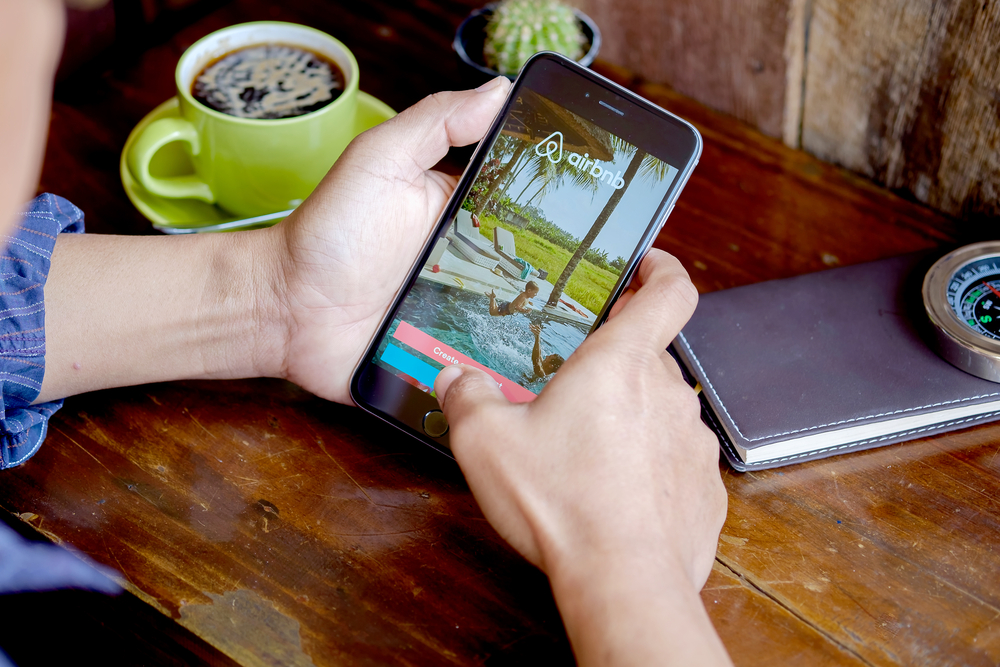In the battle to win consumers, have the competitive edge and drive growth companies of all kinds are constantly diversifying, and use technology as an enabler to do so.
Traditional bricks and mortar retailers are crossing over into new verticals, with historic grocers like Sainsbury’s setting up home and garden sections. While relatively young online brands like Amazon have started selling cars and groceries and Airbnb is piloting a laundry and dry cleaning service to be rolled out over the coming year. Even social networks are getting in on the act, with Facebook having introduced its ‘buy now’ button.
Millward Brown and WPP describe this shift as ‘ubiquitous disruption’. By this they mean the power of start-ups to ‘transform every brand in every category over the past decade – sometimes radically.’
And this disruption is being felt universally, with our Information Generation research showing that 93% of businesses say they’re feeling the impact of technology, while 96% agree that the rules of the game have been altered inexorably.
Generation D – the digital natives born from 1995 onwards – are the ones leading this shift. 86% of their tribe use their smartphone multiple times a day and 70% watch more than two hours of YouTube content daily. And retailers are having to run to keep up with them.
> See also: Need for speed: How to ensure your e-commerce website is up to scratch
The question is who will win the race – traditional retailers who embrace new technology and diversify or younger online brands who move into new sectors?
The Future Laboratory’s Tech Futures report has concluded from that organisations on either side need to consider the following to stand a chance of being at the forefront:
Be total retailers
Retail has moved a long way from the bricks and mortar focus of the last decade. Rather than being solely about a product centric transactional experience, it is now a customer centric one.
Successful retailers are those who use their physical stores as places to build a genuine connection and participate with consumers, otherwise known as Total Retail.
The new Nike Studio in Bejing is an example of this being done well. Built to coincide with the city’s hosting of the 2015 world athletics championship, it seeks to not only showcase the brands latest products but also encourage visitors to improve their levels of fitness.
Put phygital first
Shoppers are no longer interested in hearing about online versus in-store, or digital versus physical. The reality of our modern lives is a seamless interplay of these activities and brands need to think in similar terms. For retailers this means building a retail space which combines the benefits of traditional methods with the benefits of online.
These digital elements should offer more than just a cool gimmick – adding genuine value to the consumer experience. Hotel company MGM Resorts has been dabbling in ‘phygital’ by using geolocation technology, customers’ loyalty member statuses and customer preferences to send guests personalised offers and alerts for nearby attractions.
Meanwhile, alcoholic drinks company Diageo launched a campaign for Father’s Day whereby consumers could send their dad a personalised message by getting him to scan a QR code on a gifted bottle of booze.
The result of which was 100,000 unique QR downloads but also a 72% increase in sales in the run-up to Father’s Day. The key takeaway from both is ‘personalisation’ works.
Remove all ‘church and state’ separations between your social and retail channels – as consumers no longer see the difference between the two and value the convenience to shop within any social moment they wish, online and offline.
Social networks such as Facebook, Twitter and Instagram have either already added facilities that enable consumers to buy directly through their networks or are working hard to get there.
And with analysts at Sun Trust Robinson Humphrey, a US investment bank, estimating that Facebook’s ‘buy button‘ could increase its annual revenue by 5-10% it’s no wonder.
Use data to predict the next big shift – It’s no longer enough to just ‘keep up’ with what consumers and competitors are doing, brands need to be proactively predicting the next big shift before it happens.
> See also: 5 critical requirements for surviving and thriving in e-commerce today
Big data analytics is of course the best way to do so. Retailers are currently leading the way (in the UK anyway) according to EMC’s ‘Big Data League’ report, which surveyed 300 UK businesses to see how effectively they were using big data analytics.
They use big data to calculate which items will sell best where, through which channels, how to stock and market appropriately. The next five years will be a battle of the algorithms.
Ultimately everything brands do must smarten and enhance the way people live, work and play. Consumers are no longer satisfied with the status quo, they want to be consistently surprised and delighted. The brands who are able to do this are the ones who will drive continuous success.
Sourced from Mark Sear, CTO Big Data, EMEA, EMC Consulting







